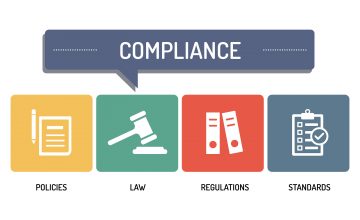PDF or HTML: Myth Vs. Facts
August 24, 2018
This is the second post in our series of Myths vs. Facts that aims to dispel the myths and provide facts to some of the most common types of issues we face at Accessibil-IT.
Today we will be looking at HTML and PDF to see which one is truly better for accessibility as this is a re-occurring topic of discussion.
Which format is better?
The short answer is…it depends; however, as we have mentioned in previous posts, the answer is not to select a single format. There are a few factors to consider about the content when selecting which format to use. Both formats have their place, and we share below our own rule of thumb when recommending which format should be used for a given piece of content:
– Orange Checks represent that the format can be used, but is not ideally suited
– Green Checks represent that the format is ideally suited for the type of content
| HTML | Winner | ||
|---|---|---|---|
| Starting Point | |||
| Microsoft Office Suite | |||
| Adobe InDesign | |||
| XML Repository | – | HTML | |
| Volume of Content | |||
| < 20 Pages | TIE | ||
| > 20 Pages | |||
| How Quickly Will the Content Be Needed to be Posted | |||
| < 20 Pages | |||
| < 50 Pages | |||
| < 100 Pages | |||
| < 250 Pages | |||
| How will Content be Consumed? | |||
| Printed | – | ||
| Web | TIE | ||
| Mobile | TIE | ||
| Distributed by Email | – | ||
| Archived | – | ||
| Professionally Designed | – | ||
Myth – a PDF isn’t accessible on mobile devices
This is not correct. Adobe Reader on mobile now allows readers to access the tags of PDF/UA compliant files in iOS and Android.
Myth – PDF and HTML cost the same
In a study done for a Canadian Federal Agency, our PDF accessibility services were compared to a leading Web Accessibility partner concluded that the remediation of the same content was four times more expensive in HTML than PDF. We receive requests for HTML and PDF quotes often and consistently conclude these findings to be true.
Why is HTML so much more expensive?
The higher cost is due to the way content is converted from its source format into HTML. Authors usually are not HTML authors, they use applications like Microsoft Word, or PowerPoint or Adobe InDesign to write content, which is the source file. The content needs to be taken from the source file and put into a different programming language for HTML. The content must also have accessible semantic structuring. It is a technical process that must be done by properly skilled resources.
Fact – The choice of PDF vs HTML can depend on availability of suitable resources
Most organizations have a much larger development plan than available budget or sufficiently skilled resources and choices have to made. Does your organization face this problem? A PDF can be completed immediately following completion of a source document. HTML conversion may likely have to be scheduled into the dev plan which impacts the timing of posting your document.
Stay tuned for more myths and facts. Together we can correct misconceptions and create better awareness of document accessibility.
Contact us at info@accessibilit.com or visit our website at www.accessibilit.com, to learn how we can help you.


